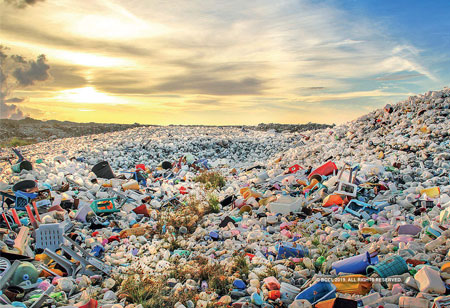THANK YOU FOR SUBSCRIBING
Solution to Plastic Waste - Cat-HTR in Australia
Australia alone produces around 3.5 million tonnes of plastic every year. Out of that, currently, only 10 percent gets recycled, and the rest is either buried, burned, or shipped overseas.

By
Apac CIOOutlook | Monday, November 25, 2019
Stay ahead of the industry with exclusive feature stories on the top companies, expert insights and the latest news delivered straight to your inbox. Subscribe today.
Australian scientists have found ways to tackle the plastic pollution through Cat-HTR which converts the plastic materials back to the liquids and chemicals they came from
FREMONT, CA: Plastic waste across the world pose a serious threat to the ecosystem. There has been barely any permanent solution to handle it until an Australian scientist Dr. Len Humphreys and Sydney University Professor Thomas Maschmeyer say they could process plastic, that cannot currently be recycled.
Australia alone produces around 3.5 million tonnes of plastic every year. Out of that, currently, only 10 percent gets recycled, and the rest is either buried, burned, or shipped overseas. It was only in January 2018 when China refused to accept any of Australia's recyclable waste, the Australian industry woke up to the emergency for plastic waste.
Then came Dr. Humphreys's statement, which claimed that plastic waste is a resource that he can use as fuel or remake it into new plastic. Cat-HTR or the Catalytic Hydrothermal Reactor does it through a form of chemical recycling that changes plastic at the molecular level using hot water at a very high pressure to turn them back into oil.
Dr. Humphreys said that the Cat-HTR process is converting those materials back to the liquids and chemicals they came from. From there, the liquids can be turned into bitumen, petrol, or back into different kinds of plastics. He also claimed that the technology is different from the existing plastic-to-oil technologies like pyrolysis, that involves heating materials at very high temperature.
The Cat-HTR process does not require the plastic to be segregated on the basis of their type and color, and it can recycle anything from milk cartons to wetsuits. It implies that plastic can be recycled again and again. The company claims to process around 20000 tonnes of plastic per year if provided a commercial facility.
The idea appealed to many scientists and professors across the country and was well received by them. The technology was trialed at a pilot plant on the NSW central coast, and a company named Licella has agreed to take the idea to the market. The company will have its first commercial recycling plant in the United Kingdom, where it believes the government grants and policies were favorable than Australia.
Check out: Top EHS Solution Companies





